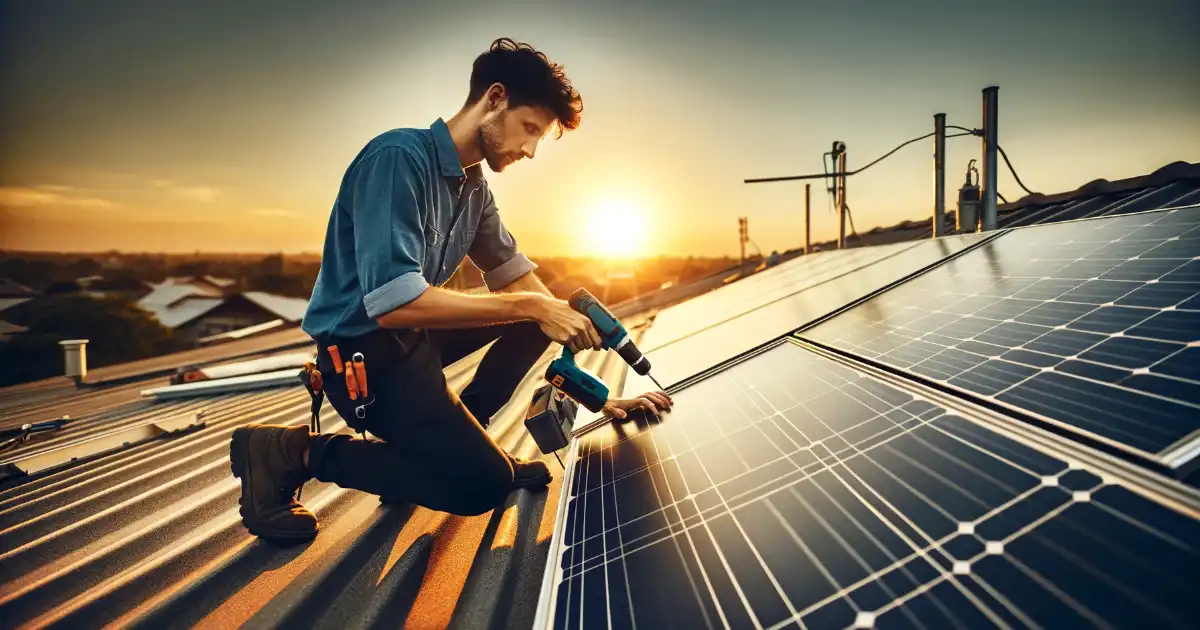As the sun rises on a new era of solar technology, Australian homeowners who were among the first to embrace solar energy find themselves at a crossroads. The once pioneering systems, now aging and overshadowed by technological advancements, beckon for an upgrade.
The Dawn of Solar in Australia
In the early 2000s, Australians enthusiastically adopted solar energy, enticed by lucrative feed-in tariffs and substantial federal solar rebates. These initial solar setups, typically modest in scale (1-2kW), marked the infancy of solar technology in the country.
Outdated Technology: A Glimpse at the Past
A stroll around your home might reveal the relics of this bygone era: old-school blue solar panels and dust-covered inverters, miraculously still operational despite their advanced age. Back then, solar panels were limited to 150-200W, covering roofs with 5-10 panels to generate modest energy savings. However, with the lapse of premium feed-in tariffs, these systems contribute minimally to modern energy demands.
The Leap in Solar Evolution
Contrastingly, today's average solar installation in Australia boasts a capacity of 9.3kW, generating approximately 32kWh of electricity daily, aligning seamlessly with current household energy consumption patterns.
Cost and Efficiency: Then and Now
Reflecting on the past, a solar system purchased in 2009, despite its higher cost per watt ($3.17), would have paid for itself within 3-4 years due to the high feed-in tariffs and rebates then available. Fast forward to today, the cost has significantly dropped to around $1.10 per watt, making a 10kW system more affordable and efficient.
Technological Advancements and Warranties
The leap in technology is evident in the increased efficiency of panels (from 15-16% in 2009 to 18-22% in 2023) and extended warranties (25 years for panels and 10-15 years for inverters), reflecting advancements in solar technology and stricter industry regulations.
Installation Quality: A Crucial Factor
The quality of installation plays a pivotal role in a solar system's longevity and efficiency. The industry has evolved from the early days of inconsistent installations to a highly regulated sector ensuring top-quality setups.
The Power of Modern Panels
Modern solar panels deliver double the wattage (350-400W) in roughly the same size as older models, allowing for larger systems without additional roof space.
Real-life Implications and Future-Proofing
Upgrading to a more robust solar system not only slashes electricity bills but also caters to evolving lifestyle needs, such as increased energy consumption by growing families and the integration of electric vehicles and battery storage.
The Economic Sense of Upgrading
Consider the financial journey of solar systems over the past 15 years. Much like a car, a solar system is an investment. Unlike a vehicle, however, a solar system continues to pay dividends well after its cost has been recouped, with many more years of savings ahead.
A Specific Call to Action for Victorians
For Victorians facing the end of the 60-cent premium feed-in tariff in 2024, upgrading to a larger system could mean the difference between negligible savings and substantial reductions in electricity bills.
Conclusion: Embracing Energy Independence in 2024
As we forge ahead into 2024, homeowners are encouraged to embrace the shift towards energy independence. Upgrading your solar system not only aligns with modern energy needs but also paves the way for a sustainable, cost-effective future. With various rebates, incentives, and financing options available, the transition to a newer, more efficient solar system has never been more accessible.



